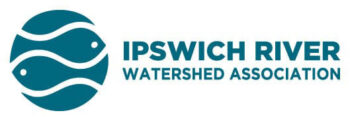OBSERVING WILDLIFE
Tree swallows. Photo by Judy Schneider
Have you ever been hiking and come across a tree gnawed by a beaver, or followed the tracks of a deer, or heard the song of a white-throated sparrow, or seen an otter splash nearby? Seeing wildlife or the signs of their presence is often the high point of an outing. The Ipswich River Watershed abounds with wildlife. It is an excellent place for birding, salamandering, butterfly watching and animal tracking.
The Ipswich River is an essential habit and food source for many species. Wildlife lovers can support our mission to protect this habitat through their actions and their support.
BIRDING
It doesn’t matter whether you’re an expert or a novice – the Ipswich River Watershed provides many opportunities to observe a great variety of birds. The watershed provides habitat for a number of endangered and threatened species. Many other birds use the Ipswich for nesting, resting and cover.
Ipswich River Wildlife Sanctuary Mass Audubon’s largest sanctuary has 2800 acres of diverse habitats and many visitors enjoy feeding chickadees, tufted-titmice and nuthatches from their hands on winter walks. Mass Audubon has another sanctuary at Cedar Pond in Wenham, another wonderful place to observe birds.
Crane Beach located in Ipswich, this is one of the most important habitats for least terns and piping plovers. There are special measures in place at the beach to protect these birds while accommodating the huge numbers of people who enjoy the property; we thank you in advance for respecting the restrictions. The beach is also a great place to watch shorebirds.
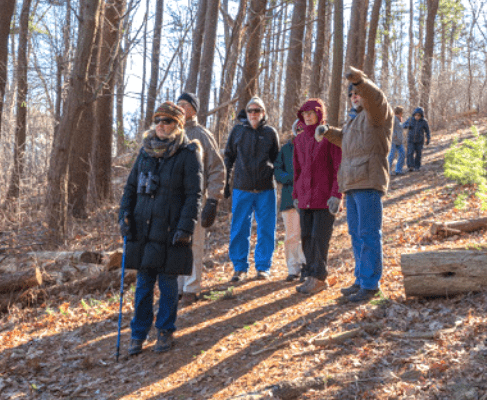
Please respect wildlife. Keep your distance, do not interfere with their natural behaviors and do not disturb their homes or offspring. Doing so will keep you safe and keep wildlife happy.
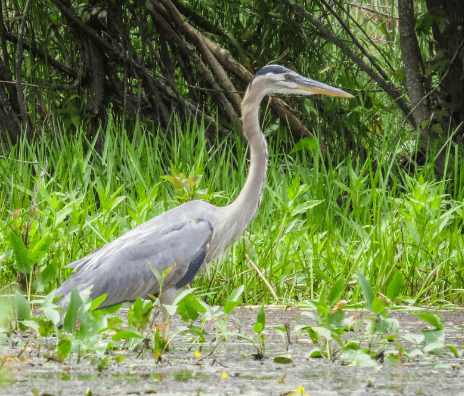
Great blue heron. Photo by Judy Schneider.
Bald Hill/ Boxford State Forest an important birding area with the chance to see many species. Barred owl, northern goshawk, pine warbler, Louisiana waterthrush, red shouldered hawk, wood duck, solitary vireo, winter wren, and eastern phoebe to name a few.
Willowdale State Forest is a paradise for nesting birds and habitat for 8 state-listed rare species, including the least bittern.
Norwood Pond located in Beverly, hosts a multitude of species including hummingbirds, thrushes, warblers, orioles, woodpeckers, great blue herons, egrets, wood ducks, hawks, owls, wild turkeys and woodcock.
Other properties of importance for birding include Appleton Farms, Bradley Palmer State Park, Harold Parker State Forest, and the Ward Reservation. Smaller properties such as Fairbank Meadows in Reading, the J.C. Phillips Wildlife Sanctuary and Long Hillin Beverly also provide excellent habitat and opportunities for birding.
SALAMANDERING
One of the most ethereal and unique experiences available in the Ipswich River Watershed is the experience of going salamandering. Salamanders are small amphibians, many of which are threatened or endangered species. To go salamandering you must go out on a dark and rainy night. Good rain gear and a powerful flashlight with red-screening are critical for this activity. You can locate vernal pools by listening for the continuous chorus of wood frogs, which also use vernal pools in their life cycle. Their chorus sounds like soft quacking, and is often accompanied by the high-pitched, more familiar song of spring peepers, tiny tree frogs which produce an amazing amount of sound!
The Town Forest in Reading has numerous vernal pools, some quite close to the access road to the Reading Water Treatment Plant. On the first warm nighttime downpour of the spring, you will often find groups of curious enthusiasts, flashlights bobbing as they walk on the dirt road, following the salamanders to get a peek at them at their once a year emergence, in their critical habitat. It’s an experience not to be missed!
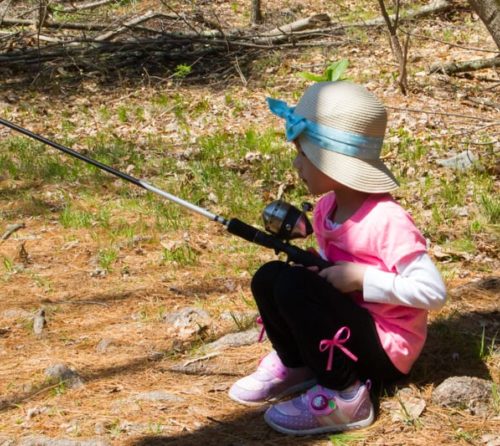
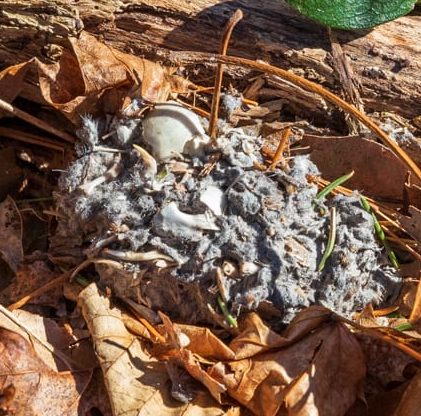
Owl pellet, with bones. Photo by Judy Schneider.
ANIMAL TRACKING & LISTENING
In days of old, many children learned to “read” the landscape; this was a survival skill for them. Nowadays there is renewed interest in learning to read the landscape, more for enjoyment and to make being outdoors even more interesting and fun. Tracking animals is a skill to be gained over time, but a great start is to go out walking with an experienced naturalist.
A good field guide brought along after a fresh snowfall will help you to picture how wildlife move about in the winter. You'll see how important wetlands are. Look for other signs of wildlife as well. Some are pretty obvious, like beaver lodges and the gnawed stumps near their dams. Others may be more subtle, like branches with buds nipped off on low trees and shrubs – an important winter food source.
Keep both your eyes and ears tuned to your surroundings. The quacking of wood frogs and high call of spring peepers, or melodious trill of American toads, add so much to springtime explorations. Even the familiar chatter of squirrels or calls and songs of cardinals, blue jays, robins and chickadees are a welcome part of the outdoor experience. You’ll soon find that you can identify some insects, amphibians, birds, and mammals without seeing them, and begin to sort out the wild music around you into a natural symphony.
